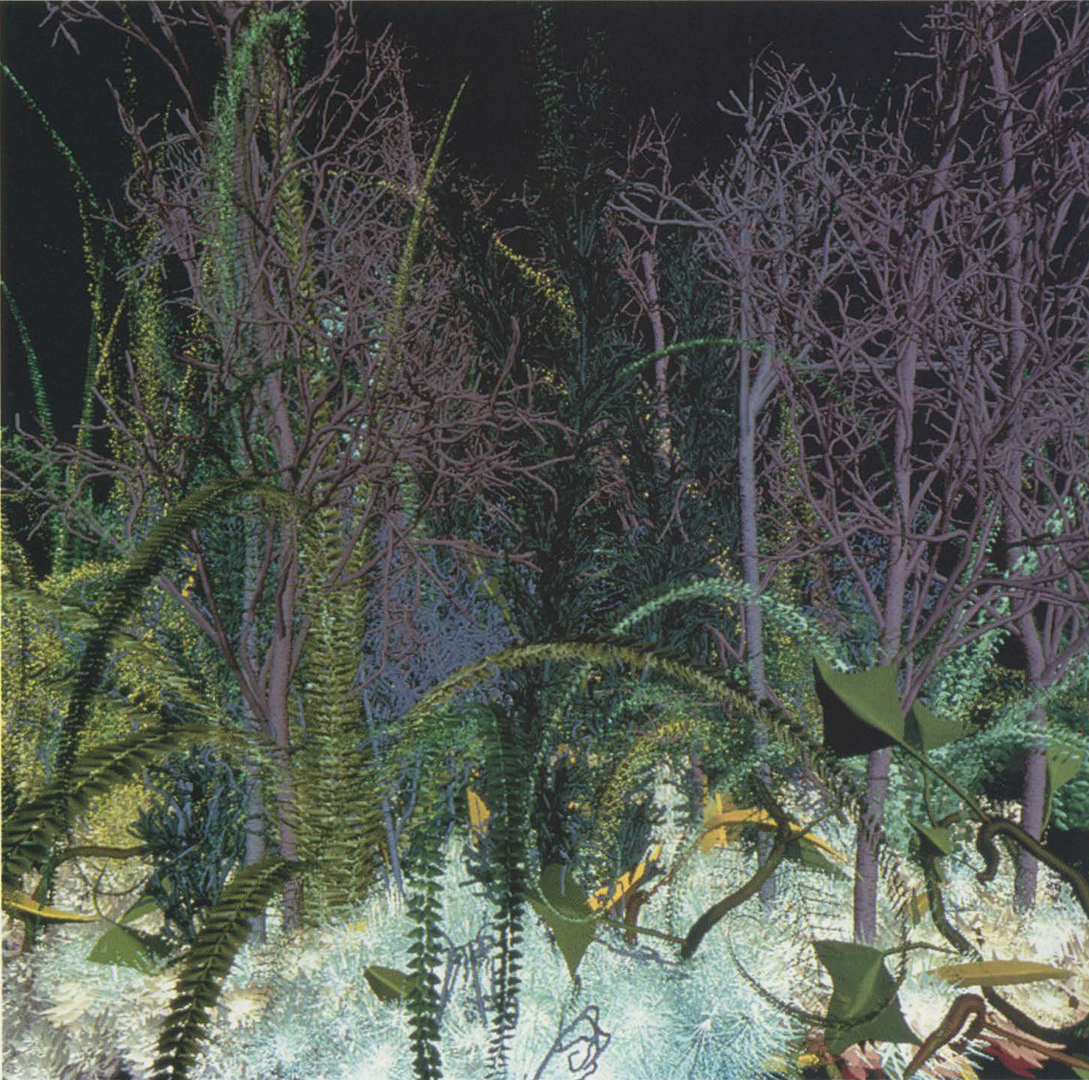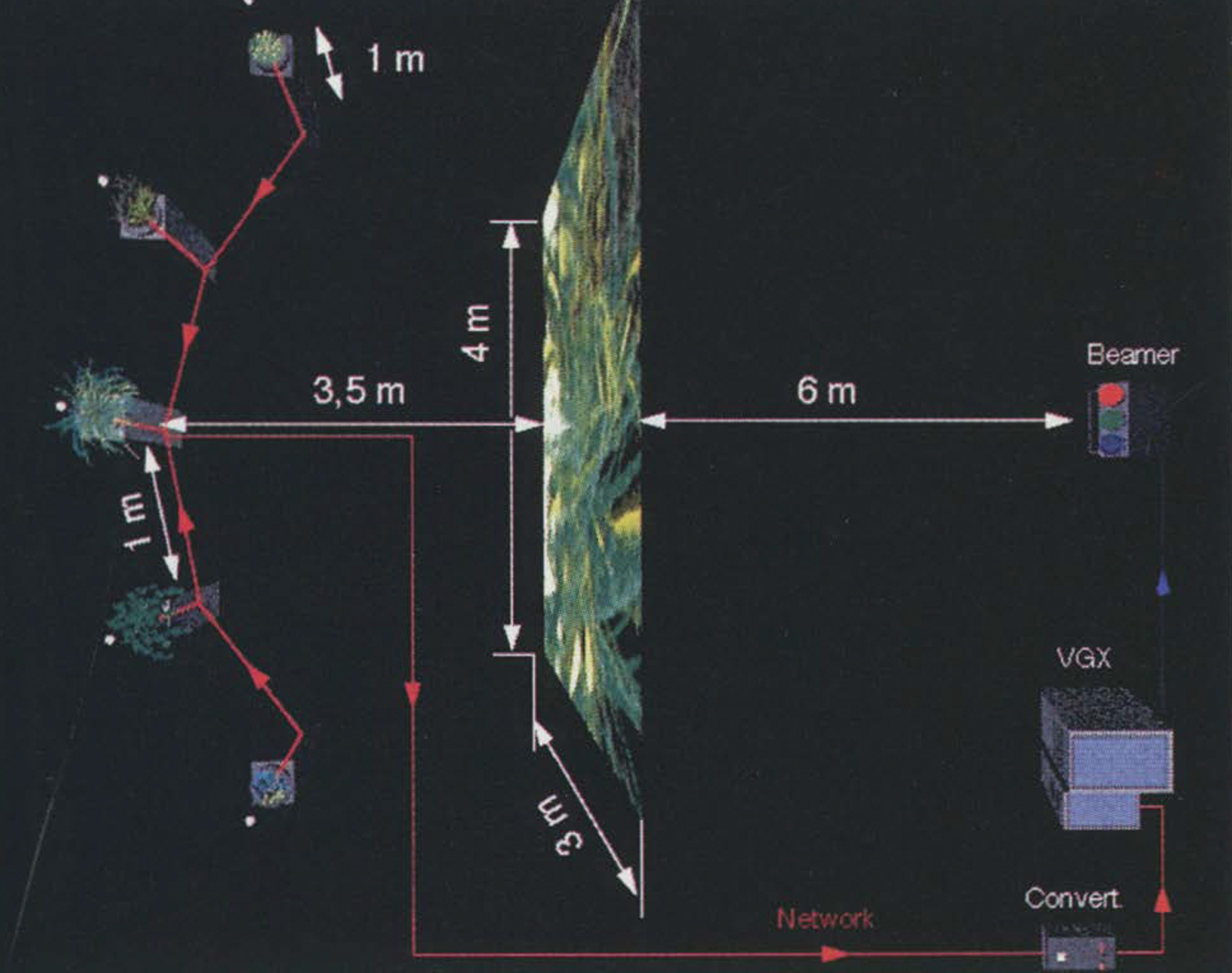Christa Sommerer, Laurent Mignonneau: Interactive Plant Growing
Artist(s):
Title:
- Interactive Plant Growing
Exhibition:
Category:
Artist Statement:
“The rate of growth deserves to be studied as a necessary preliminary to the theoretical study of form, and organic form itself is found, mathematically speaking, to be a function of time.We might call the form of an organism an event in space-time, and not merely a configuration in space.”
– D’Arcy Thompson, “On Growth and Form,” Cambridge University Press, 1942
Interactive Plant Growing is an installation that deals with the principle of the growth of virtual plant organisms and their change and modification in real time in 3D virtual space. These modifications of pre-defined “artificially living plant organisms” are mainly based on the principle of development and evolution in time. The artificial growing of program-based plants expresses the desire to discover the principle of life as defined by the transformations and morphogenesis of certain organisms. Interactive Plant Growing connects the real-time growing of virtual plants in the 3D space of the computer to real living plants, which can be touched or approached by human viewers.
By touching real plants or moving their hands toward them human viewers can influence and control in real time the virtual growth of 25 and more program-based plants, which are simultaneously displayed on a video screen in front of the viewers. By producing a sensitive interaction with the real plants, the viewers too become part of the installation.
The various distance modulations of the viewer’s hands directly effect the appearance of the virtual plants, as they are ferns, mosses, trees, vines, and a cleaning plant. By sending different data values to the interface (which connects the plants and the growing program), the appearance of the virtual plants can be modified and varied. The viewers can control the size of the virtual plants, direct the rotation, modify the appearance, change the colors and control new positions for the same type of plant.
Each virtual plant species has at least six different variations, but generally there are more possibilities than just 25 variations of five plants, since the size, color, and translation can be modified for each single plant as well. All variations ultimately depend on the viewers sensibility to find the different levels of approximation distances.
In Interactive Plant Growing, artificial plants grow in a virtual 3D space, programmed by Laurent Mignonneau and Christa Sommerer on a 4D -VGX 320 Silicon Graphics Computer. This virtual growing is based on specially developed algorithms, according to the different morphological characteristics of real plant differentiation. Virtual growing is not based on the same principles as real growing, rather the appearance of movement and differentiation and determination during this evolutionary process can be considered to be optically similar.
In the program a new method of differentiation was developed that can be compared to the L-Systems of Aristid Lindenmayer, but using special randomizing parameters, which are seen as “artificial growth and differentiation regulators.” These randomizing parameters determine the morphology of the organisms by controlling their variations of forms. Each step in the construction of the plant forms is randomized in the greatest possible extent within prefixed minimum and maximum limits; like this the potential variations are as great as possible.
This leads us to different botanical growth forms. Plants like ferns, vines, or mosses change their appearance depending on the randomizing defined variables for size, length, rotation, translation, angle, and color. This idea of advanced randomizing could be compared with the term “walking randomizing.” The limits of randomizing could be considered as determination, whereas the randomizing itself can be representative for the differentiation.
The electrical potential of the real plants gets measured by special sensors, which are attached to the plant roots. This electrical potential is then compared with the electrical potential of the viewer. This voltage difference varies depending on the hand-plant distance. The sensitivity of the plant ranges from 0 to about 70 cm in space. These electrical signals are amplified, filtered, and sent to the converter.
Each plant is attached to an independent amplifier. A converter transforms the analog-amplified and filtered signals into digital data values. All five amplifiers send their signals to the converter; a multiplexer selects the signals to be converted. These values are then sent to the parallel port of the 4D VGX 320 Silicon Graphics computer. A special protocol (interface program) between computer and converter makes sure that each data value coming from each plant is interpreted in synchronization and in real time by means of the growing program during the drawing of the virtual plants.






